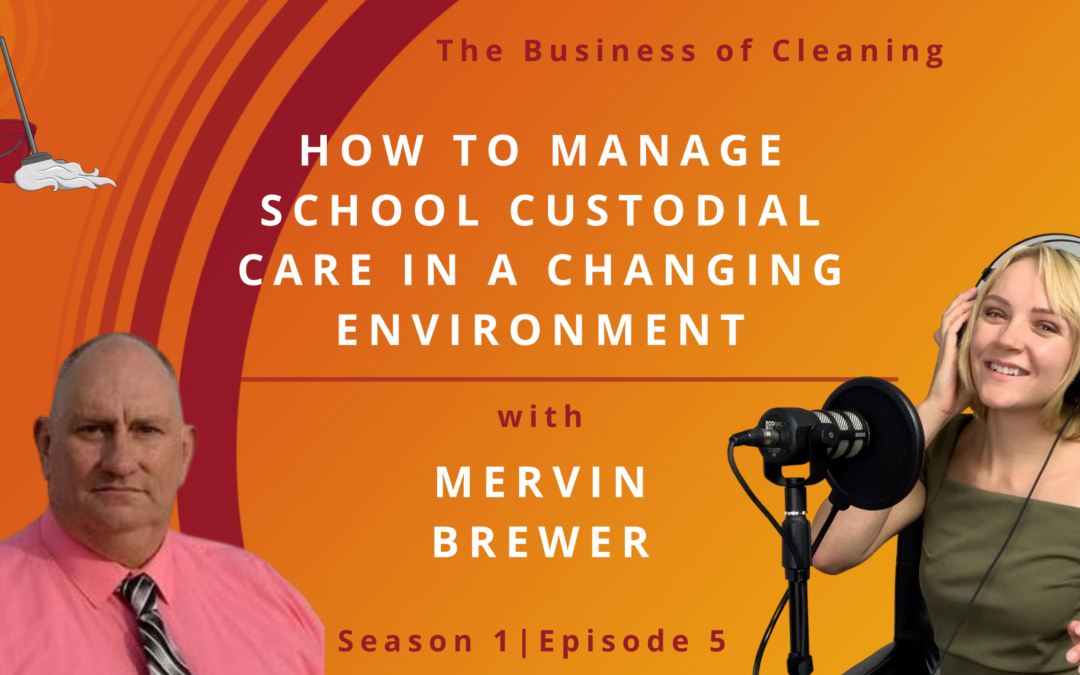With the fall school season having slipped in, there is a large concern for how school custodial teams are responding. How do you manage school custodial care in this changing environment? What does it mean for cleaning teams?
Click Here To Subscribe On Your Favorite Platform!
About This Guest:
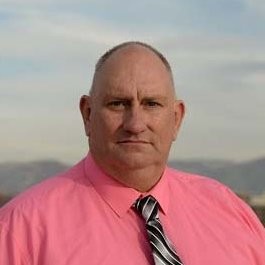
Mervin Brewer
Assistant Custodial Manager - Salt Lake City School District
Mervin Brewer was a school custodian for 26 years including being a Head Custodian of an Elementary and a High school and for the past 14 years, he has been a district level Supervisor. Mervin has been involved as a supervisor of an internationally recognized Integrated Pest Management program since its inception 14 years ago and holds a current state-certified pesticide applicators license. He is a past President of the Utah School Custodial Managers Association. A coalition of Custodial Supervisors throughout the state of Utah collaborating and refining healthy cleaning methods in public schools. Is currently a member of the Healthy Green schools and Universities Leadership Council.
Podcast Transcription
Halie Morris 0:03
Hello and welcome to The Business of Cleaning podcast. My name is Halie Morris. I’m your podcast coordinator and host, coming to you from a slightly different setting today but still the same podcast.
Today we have with us Mervin Brewer from the Salt Lake City School District. Mervin is going to tell us a little bit about his experience but specifically about what he does and what their custodial team has done. So if you want to jump right in Merv, you can go ahead and tell us more about yourself.
Mervin Brewer 1:00
Well, thanks. I appreciate this opportunity, Halie. So I’m Mervin Brewer, I’m one of the assistant custodial managers for the Salt Lake City School District. I’ve been doing this for a little over 40 years.
I started as a 14-year-old sweeper after school, come home from school and spend three hours a night dumping trash and vacuuming classrooms. Over the years, it was a good job. You know, we worked Monday through Friday, didn’t have to work weekends so great.
Why not make a career out of it and eventually move into the position of a district-level supervisor. One of the greatest things that we had the opportunity to do was be a part of what’s called integrated pest management. It was introduced to us about 15 years ago by the IPM Institute of North America and Dr. Mark Lane came out and taught us all about what integrated pest management is. It’s a common-sense approach. Common sense approach to dealing with pests instead of grabbing a can of something that kills everything and just spraying it. You actually have to do some other processes.
So, education and communication is the base. Education being the keyword, being educated on what the pest is, how to deal with it, what its biology is.
So education and then communication. A teacher sees something they need to communicate to us that they have seen something. We go identify it and then instead of grabbing the can of kills-all maybe we can just seal this room. What do you think? Seal the room and we don’t get mice in? What if we don’t feed them? What if we put the food away? What if we ….? You know, those kinds of things.
So a common-sense approach and if we have to use pesticides, we’ll use the least toxic and target not just bomb the whole room, but target with the least toxic chemical that will do the job that we need them to do.
So, the reason I bring up IPM is that it’s important to understand these principles; education and communication, followed by cultural change and cultural practices.
Mechanical exclusion, things like putting up barriers so that these little beasties can’t get in. The reason I say mechanical, we’ll get to that in a minute. Then, of course, the tip of our pyramid, our IPM pyramid, is using a pesticide but again, in a very judicious way.
Now, what does that have to do with COVID-19? Let me tell you what it has to do with COVID-19. It’s those principles. So we applied the principles of integrated pest management to our cleaning program and to our recycling program. We found that if you follow that guideline, and you plug in the different components to it, you come up with a very successful program.
So for example, when it came to our cleaning for health initiatives, education and communication were number one. We wanted our custodians to be educated, not just tell them, hey, you’ve got to use this particular product. Because I wanted them to actually understand why they’re using that product or why they’re using that process. We want them to be educated. We want them to educate the educators in the building. This is why we’re doing this. So very important, especially now with COVID-19.
So we wanted our people to be educated. We wanted communication. You get the word out to everybody. “Hey, here’s what we’re using, and here’s why”. When it came to the processes and changing some processes, you were more efficient, finding equipment that makes you much more efficient- that’s the mechanical part- when it came to the pesticide use because remember, your chemicals are still a pesticide. Your disinfectants are registered with the EPA. Okay, they kill.
So use the least toxic, targeted areas that will still get the job done with the best efficacy. Think about the disinfectants that you use. A lot of the disinfectants that you use, unfortunately, they have a kill claim if they sit on a surface for 10 or 12 minutes. Wow. We use one that has a kill claim of about two minutes, a lot less time. We found one that you don’t have to use PPE with. You don’t have to dress up in Zoot Suit and a respirator just to be able to use this. It’s safe to use around your people. It’s safe to use around other people.
So for us, applying those principles into our cleaning regimen and COVID-19 comes along, We’ve set a pretty good regimen, a pretty good program, some pretty good chemicals, all of these things we kind of had in place. If you think back to the hosts of the ‘91 or ‘93 Chicago Bulls years ago, you had-
(A man enters the back of the shot and sits down at his desk) By the way, this is my partner in crime Ricky Martinez. We are known as “The Brothers In Grime”. Ricky and I, we present all over the country, ISSA usually, but other things as well.
But the Bulls, remember they had Michael Jordan and they were winning everything. They had a great plan. Phil Jackson had a great plan. Then Jordan decides, hey, I want to go play baseball and retire. Wow, that kind of goofed up his plan. Big time. But he didn’t throw out the plan. He continued on with the plan that he had, even though he’d lost one of his star players or probably his star player.
Same thing when COVID-19 hit for us. COVID-19 hit and we had a plan in place. I heard so many people who were using green products and who had decent product processes but when COVID-19, they panicked. The supply chain broke because now there were certain things that you couldn’t get because there was a run on them. They were running back to using quats or other disinfectants that were not nearly as safe to use around people.
So I was asked a question on a national webinar; “How have your people reacted to this whole COVID-19 thing? How are your custodians holding up?” and I said, “Well, for them, it’s Tuesday. Because for them, we already had a protocol in place.”
Level One protocol is just kind of touching everything every day, making sure everything’s clean, sanitized. But then as we would start getting illnesses like flu season, we better step up our protocol a little bit deeper, a little bit more frequently. Then if you actually have some kids in the building getting sick, our protocol moves too much more frequent sanitization in our buildings.
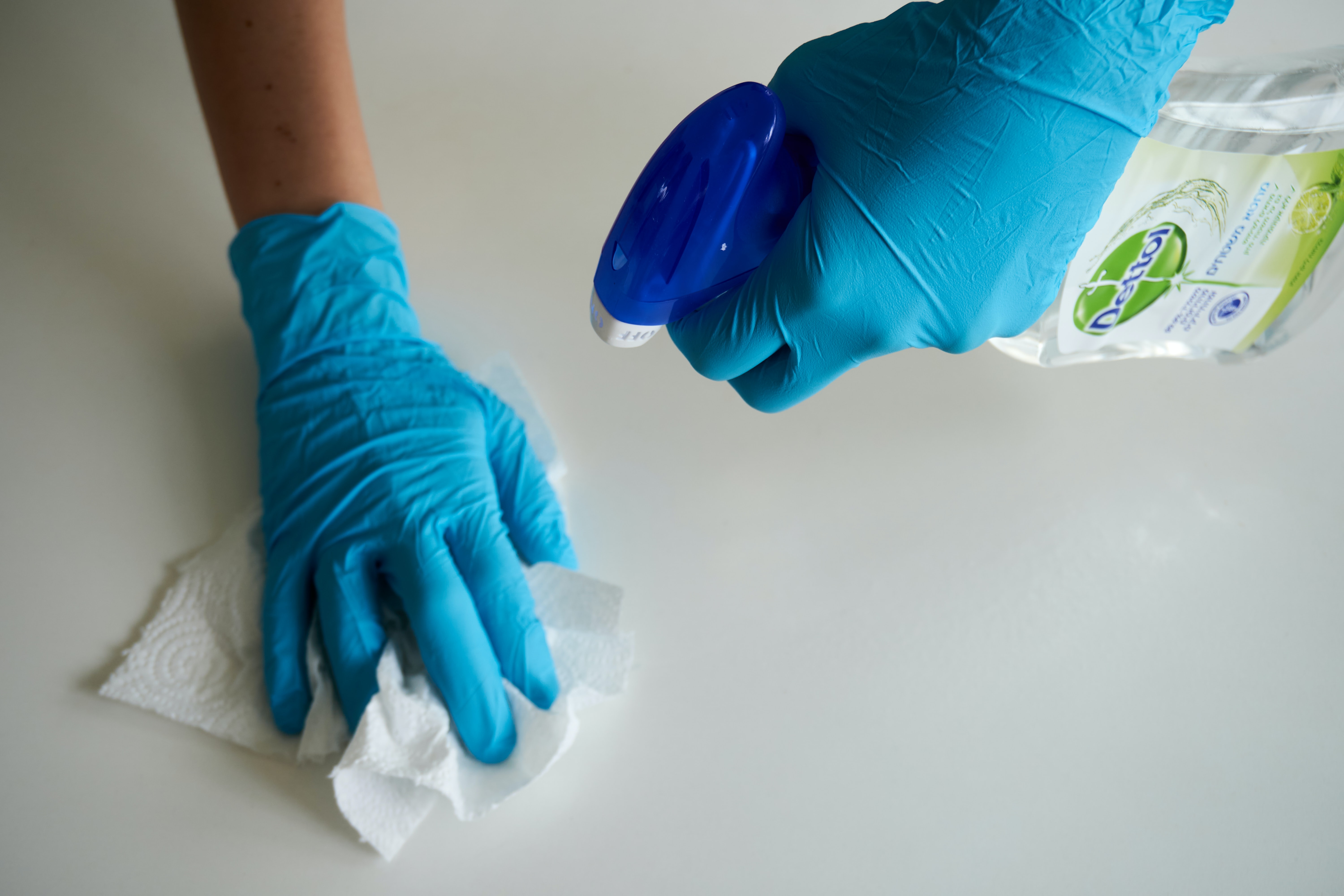
So that was already in place, and come March all of a sudden, poof, here’s COVID-19. It’s hit. What did we do to change our protocol? Nothing. Because we were already there. What did we do to change our chemicals? Nothing. Because we were already there. We already had it.
We were using on-site generation with a hypochlorous acid product that these on-site-generators make. We also had, as a backup, some hydrogen peroxide products that were available to our people. We had these little tablets that you’ve heard of. They effervesce in water and they create hypochlorous. We had electrostatic sprayers. All of this we had in place.
This was our protocol. This was our program before COVID-19. COVID-19 hits. “Okay, guys, we’re going to need you to start spraying a little bit more frequently during the day. Instead of a couple of times today, you’re going to do it after every class change or you’re going to be doing it after every meal period. Whatever it takes.
Then they closed the schools. Well, what did that mean for us when they closed the schools? We still had to serve lunch to the community. We still had a food bank that was giving out to the community and other things. We went to online learning because we didn’t close the schools. We went to online learning. I guess I misspoke that.
So we had to give laptops out to all the kids and do online learning for the last quarter. We still had people in our buildings in other words. So our custodians moved to a protocol where somebody would come into the building and as soon as they left, clean and sanitize that whole area. We actually got moved into our summer cleaning a little bit early this year, but our custodian stayed working the entire time.
The one thing I noticed that that changed with COVID-19 was an opportunity. For so long, we had a culture in our school district that was kind of hard to break. There were certain expectations, certain things that were expected of our department that I thought wasn’t really as important as the sanitizing. Sanitizing should really be king. Whether you’ve got COVID-19 or it’s just regular flu season or whatever.
So, opportunity showed itself with COVID-19. The opportunity now that everyone’s panicked and we got to have things sanitized, we got to have a clean and germ-free environment.
Okay, good. That means some of these other things that we have been doing as custodians, you need to find somebody else to take care of it. Moving that box of paper, somebody else can do that besides the custodian. Filling the Coke machine, somebody else can do that besides the custodian.
You know what, picking up and vacuuming that room, we understand that’s important, but instead of every day, it’s probably going to happen just once a week. Because every single day, we need to get every desk, we need to get every touchpoint, and we need to do it multiple times a day.
This created a huge opportunity for us to change the culture in our school district. We really wanted that cleaning for health being the number one priority. Cleaning for aesthetics is important and has kind of taken a backseat, which is good. Some of these others, as I said, outlying things that custodians have had to do, they’re kind of going by the wayside.
Right now cleaning for health is king and we just don’t want this to be right now. We want this to be how it is going forward.
Now I’ve talked to some folks because I’m part of a networking group, the Utah School Custodial Managers Association. Ricky here is the president. I’m the past president of the organization. It’s people like us throughout the state of Utah. These custodial managers meet on a regular basis to talk about best practices, what everybody’s doing, helping other districts get into IPM, or getting into green cleaning, helping each other with the struggles that we have.
It was because of what we heard from them that I had an “aha!” moment. That is most school districts- I didn’t really realize how blessed we are here in Salt Lake City, because most school districts have site-based management. That means the principal is in charge of the custodian. If the principal wants the paper moved or if the principal wants you to go park their car or scrape their window or do whatever, that’s what you do because they’re the boss. That’s not a good thing.
Having a centralized custodial leadership like what we have here, Ricky and me, and the head of our happy trio, Robin Anderson. Well, with the three of us, we manage our custodians. That’s why we’re custodial managers. We manage them. We make sure that we do the training, we do the discipline, we do everything, as far as our department goes so that we can provide to the schools the most professional custodian they can possibly get.
Well, I’ve been preaching to other school districts that now the time is a great opportunity to start working on seizing control back to a centralized custodial management team versus this site-based, where over at this school this principal wants to use straight bleach and wants the custodian to make sure that the priority is that they park their car every morning. To this school over here, that is choosing this product well, we’ve got other priorities, and actually that sanitizing isn’t a big deal for us. We’ll just have the teachers do it.
So it’s a mess. It really is a mess that way and it’s a great opportunity. Now is the time to look at these opportunities and the availability of petitioning the people you need to petition within your district to say look, we really need to have a professional leadership in our district, and a program that is district-wide, that’s not varied from building to building, but something that is consistent, and something that is trainable and something that is manageable.
I’m sure you got some questions.
Halie 15:59
I do. There are so many things that we’ve touched on. So I guess, going back we’ve talked a lot about the green cleaning. How was that shift initially because I feel like that there’s a lot more awareness of just “going green” in general, whether it’s food choices, cleaning, clothing, things like that.
We’re seeing that across the globe. It regressed a little bit as you said. With COVID-19 people packed and went for what they could grab first. But where did you start to see that shift towards greener products and what was that catalyst, that pushing point?
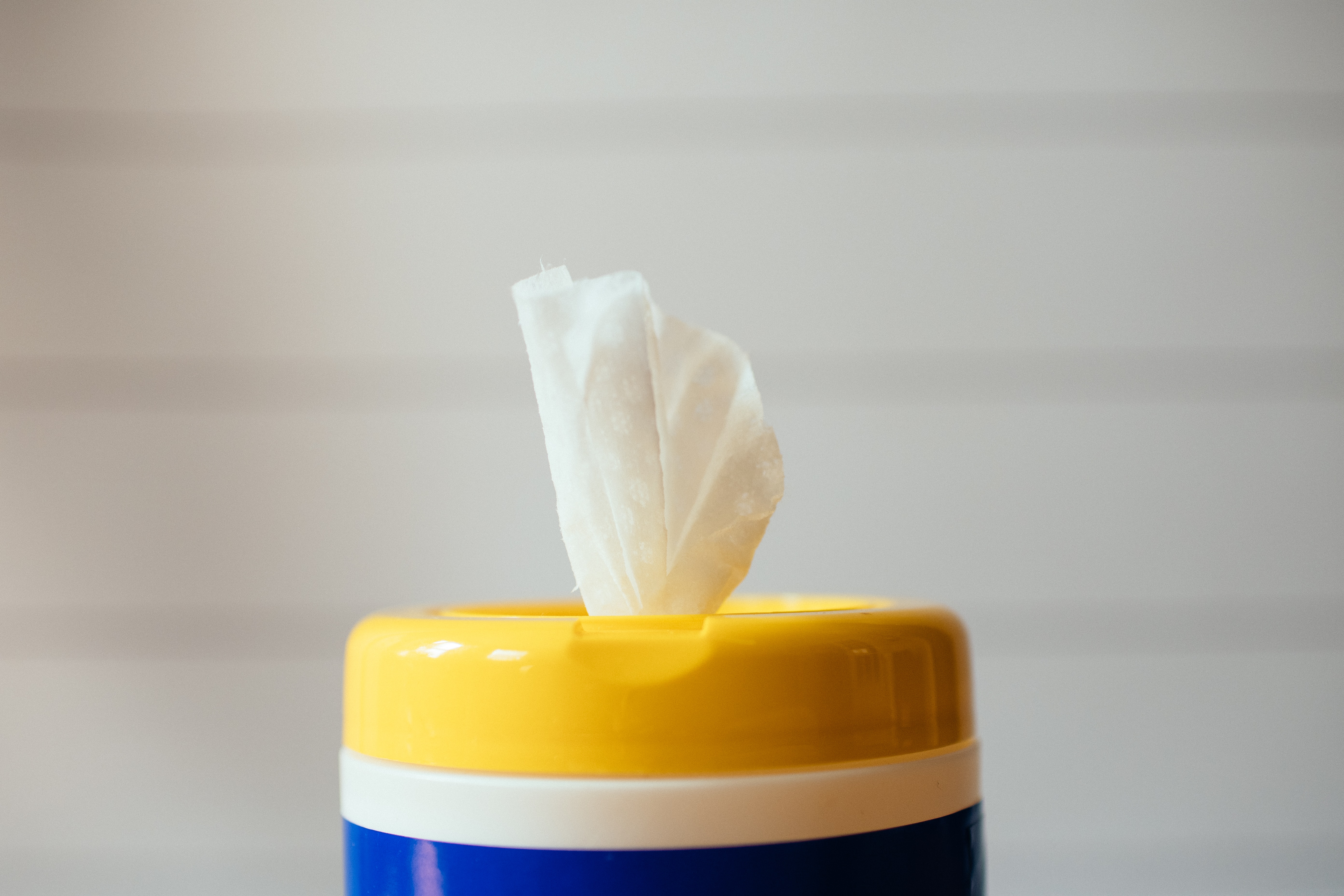
Mervin 16:40
Well here in Salt Lake, I’ll tell you the personal side of it because this is not the kind of story you’re going to hear anywhere else. So, I am not that green guy. I am the 1967 Mustang with belching smoke. You can smell that exhaust. Smells so wonderful, you know, with a big old muscle car. I’m not that green guy. I am that other kind of guy.
But I have to tell you when you see something efficient when you see something that will help make your people more professional, you look at it very closely. The saving-the-planet part wasn’t the reason I got involved in green cleaning.
For example, I had custodians that would put on these latex gloves and they would break out in a rash. I had custodians, myself, when I was a custodian, I would dust and use those feather dusters and you’re sneezing or you’re filling up the peroxide dispenser after a half hour you’re sneezing because you got those particles in your nose.
I remember using ammonia, straight Aqua ammonia to scrub our floors. I remember the great graffiti removers that had Totaline in it. Oh, you haven’t smelled those? They’re great. Oh, wow, man.
These things aren’t healthy for you. And over 35 to 40 years of my career, who knows what damage they did? I guess you can see that. These aren’t good for us and they aren’t good for the kids to be around. They aren’t good for the teachers to be around.
So I started looking into what is going to be more efficient and what’s going to be safer. I have to tell you that the first thing we used to use a quat in our restroom everyday and the floors were sticky. They were sticky, and they smelled. So I made the decision. Well, we’re going to go to bleach. We’re going to use bleach four days a week, and we’re going to use that quat one day a week.
Hey, our floors weren’t sticky anymore, were they? They quit stinking, but then again I had trouble breathing because of all the bleach. My clothes, of course, we’re all stained because of the bleach.
Then I learned. I was educated. I took it upon myself to get educated in these green products and I found this thing called hydrogen peroxide. Now I used to put that on cuts and it was great so I knew that it killed germs. I guess you can’t make that claim because of industry. Hey, hydrogen peroxide kills germs. I poured on my arm and I could see it.
So it made sense to me. Hydrogen peroxide. Let’s try this out. We started using hydrogen peroxide and it took over 95 percent of our chemicals because we could use this one strength and it would clean windows. It would clean floors. It would clean touchpoints, everything pretty much.
The stuff that we used to put on carpets to clean carpets and then, of course, it would retract. Hydrogen peroxide left them slightly acidic, which is what you want to do. That’s why you rinse the carpet with vinegar. Our carpets were cleaner, and the spots wouldn’t come back as much.
It was pennies on the dollar to clean with the hydrogen peroxide based products versus what we had been using in the past. So all of a sudden, we’re saving a lot of money. Now our budget didn’t go up. They didn’t give us any more money. Heck no! So we had to go to a green profile by finding a way to be more efficient. Maybe some products we’re not going to use anymore. Maybe this product is really expensive, but in the long run to afford that product we’re going to use other things like the peroxide that cost us less money.
So that’s how we got started on our green journey. We started to run into more and more people. We have a consultant that we ran into at one of our healthy green schools and colleges. I’m on their board, that Leadership Council. I was speaking in Seattle about five years ago and ran into this lady.
Her name was Heidi Wilcox. She is a consultant on her own now. And Heidi is one of the most educated people in the generated water that you’ll ever meet. And she introduced us to some of these companies and some of these products that we now use, aqueous ozone and tablets, sprayers, all of these things that helped us become a lot more efficient, but also much much greener profile.
Halie 21:52
With that, it actually improved the situation and was introspective, for the team and for the staff, just overall for your people. This is great because some people are like, Oh, well, it’s for the planet, but it’s not the best thing for us.
But obviously, you wouldn’t have done it if it weren’t the best thing for you because that was actually where you started. So what was the response then from the staff that was actually using the products when you started to switch?
Mervin 22:22
We included our custodians, not everyone obviously, but we would have these committees we would put together and we wouldn’t just handpick the people we knew that would give us the “yes, sir” kind of answers. We picked skeptical people, we picked good hard workers. We picked not-so-hard workers. We picked people we figured could break the system. If anyone can break it, Joe can break it.
We would pick those kinds of people to try what we wanted to use. So we would go off the feedback and we would see what the feedback was from our folks. We wouldn’t make these decisions lightly. We would get this kind of feedback and there was a little bit of pushback with peroxide at first because it didn’t clean quite as well as some of the other products we had already been using.
When it came to the disinfecting part, that was an easy sell, because we educated our people on how to properly disinfect. And unfortunately, most people don’t understand that if you spray a disinfectant and wipe it, you’re not disinfecting a thing. You might as well be using water or something else. All you did was remove some of the soil and that’s great. That’s where your pathogens are growing. It is on that soil. That’s good that you remove that, a great first step, but too many people think that they can spray and wipe and that they’re disinfected. It’s really sad.
Halie 24:02
You’re supposed to disinfect a clean surface, right? You have to get the surface clean so that you actually can reach it.
Mervin 24:11
Yes. So we are very careful with the verbiage we use. We talk about how when we go through now, in our schools we do what we call “routine sanitization”. Because what we’re doing is we are spraying and wiping. We take a microfiber rag and we will spray these touchpoints and we will wipe them.
So we know we’re not disinfecting. We are not going to use that word “disinfect” because we’re educated. We know that we’re not disinfecting, but we are sanitizing. We are cleaning. We are removing the dirt and I bet you we’re not removing all the soil either.
Because if you’re spraying and wiping, you are not removing all the soil really. I think if you spray and let it sit, then work it in, you’re probably cleaning a surface. If you’re just spraying and wiping, I don’t think you’re cleaning the surface. I think you’re removing most of it.
Again, as I say these mechanical things, and I want people to process this in their mind. Go home and try it. Spray and wipe something. Then over here on this part of the counter, spray it, let it sit for a minute, and then work it in and wipe it and see the difference. Understand the difference between cleaning, sanitizing, and disinfecting.
So for us, we use the words “routine sanitization.” We go through multiple times a day and hit touchpoints. We use products that are sanitizers, the hypochlorous products so that we can do some cleaning. We can do some sanitizing.
Look, what is sanitizing? 99 percent? What is disinfecting? 99.99999%? Well, I’ll tell you what, I’ll take 99% odds in Las Vegas any day. If I’m going to hit the goal 99% of the time hit the goal, I’m going to take those shots.
So sanitizing and that cleaning that happened several times during the day makes it a whole lot easier at night for our people to go through and do an actual cleaning and disinfecting.
Halie 26:35
It makes it safer.
Mervin 26:37
Yeah.
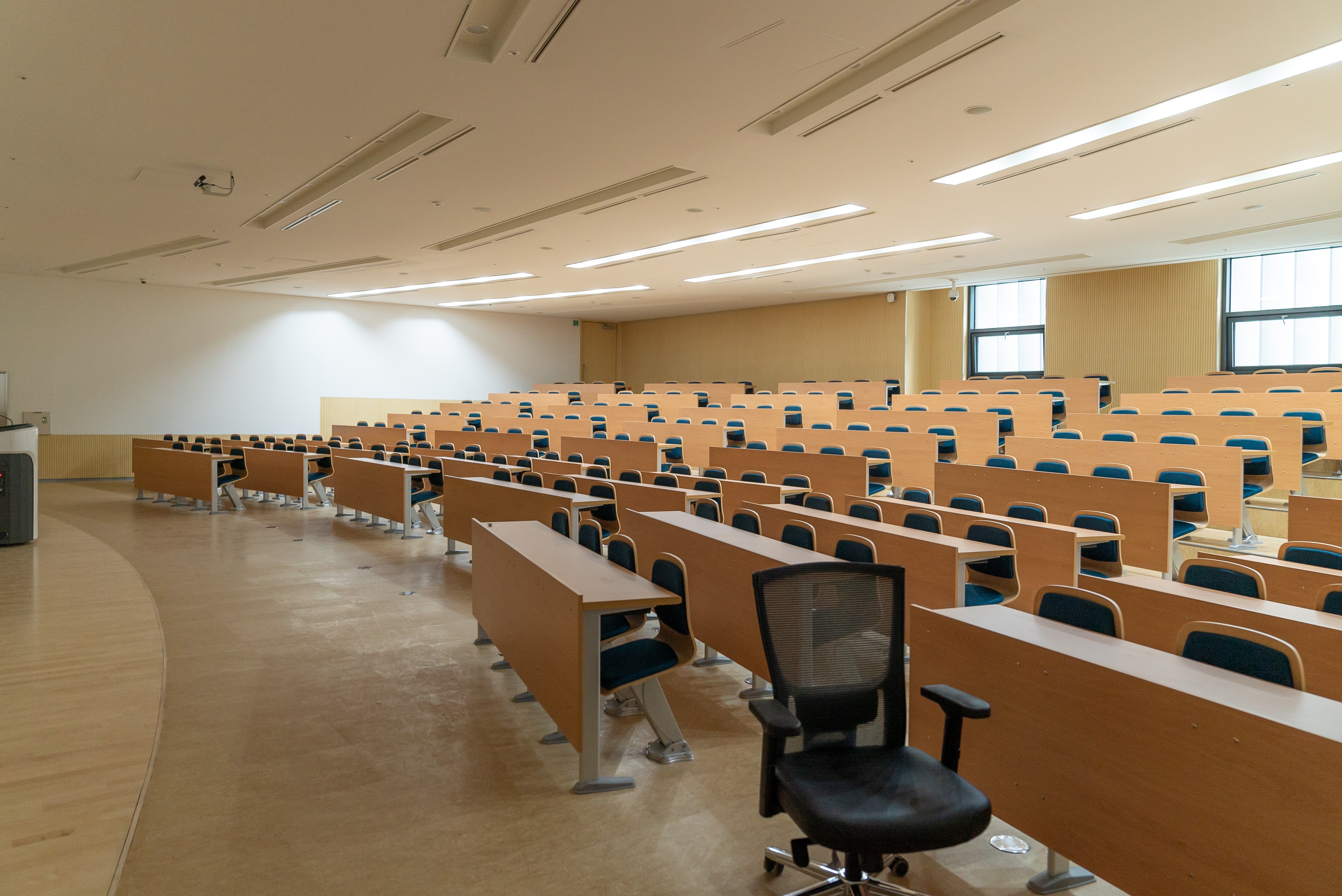
Halie 26:39
All right. I think it’s great to really hear about what you guys are doing, and that you’re not just doing it your level. It sounds like you’re communicating it as well. This is what we’re doing. This is why it’s effective. You need to get on board.
Because obviously you guys are over there and I’m over here. I’d love it to make its way fully our way, to get more people on board and start looking at these alternatives and considering more the process and how they’re doing it and why.
Mervin 27:11
Communication is so key. When COVID-19 hit and our superintendent said, I’m really concerned about the supply chain, because they’d heard other school districts had a problem with the supply chain. Well, one of the things that our superintendent was concerned about was how’s our disinfectant was holding out. Are we going to be okay to get through till the end?
I said, Well, it really depends on some of these consumable products. Yeah, we’re good for a couple of months. But I said when it comes to the sanitizer, disinfectant, as long as we have water, and salt and electricity, we can generate our own product forever. She was very taken aback by that and I told her why on-site-generation was so good.
Well, long story short our district has now purchased four more on-site generators. Other school districts nearby that have that we’ve been associated with have purchased 15 on-site generators. It’s growing like a wildfire out here because people can see the value. If your supply chain is broken, and you can’t get a certain product. What do you do?
Fortunately, we were able to keep going, because we were educated and we’ve got the word out there. People started flocking and helping us out financially to get these things taken care of. So yes, get the word out that on-site generation, it’s a good thing.
Halie 28:45
That’s good! It’s going to be that, of course, initial investment, and then you’ve set yourself up for success. When a crazy situation like an entire year of chaos happens, you can handle it. Wow, you guys, just for perspective to those listening, they are handling quite chaotic weather right now on top of COVID-19 and trying to shift back into the school season.
Mervin 29:18
We had a major earthquake at the beginning of March, just as this all came down and as we were going to an online format. We had a major earthquake here in the valley. So that threw a wrench in a lot of things.
Now yes, we just had two days of over-100mph winds, a hurricane in Utah. Wow! Trees down everywhere. Power out to hundreds of thousands of homes for several days. We’re on the third day of 66,000 people without power.
Halie 29:57
You guys are going through chaotic things. So it’s very impressive to see. Kudos to you guys. You’re handling it, it sounds like, so well at least on your side. It sounds like the school system is doing well for the students too. So, all right, I guess we’re kind of wrapping into a point where I think this is a good stopping point. So do you have any additional advice or things that you would like to touch on before we end?
Mervin 30:23
Stick to the plan. Make a good plan. Come up with something that works. Look at as many contingencies as possible and make sure that you’re deep. You’ve got that fifth man off the bench. Okay, you’ve got the backup just in case. And then when? When it hits the fan, stick to the plan.
That’s my advice.
Halie 30:47
All right. Don’t panic.
Mervin 30:50
Don’t panic.
Halie 30:53
So that is going to be it for our episode today. If you’d like to get in touch with Mervin, ask for more advice, or just reach out, you can. We will be putting a blog post in correlation to this podcast to provide even more information. For now, just go ahead, make sure you subscribe and leave us a review so we know how we’re doing. Thank you!

